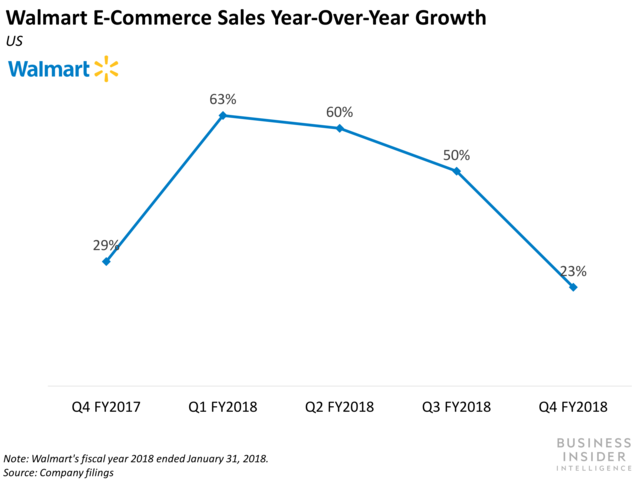Here's how Walmart's new site may revive its online sales (WMT)

BI Intelligence
This story was delivered to Business Insider Intelligence "E-Commerce Briefing" subscribers hours before appearing on Business Insider. To be the first to know, please click here.
Walmart announced Tuesday that it's going to redesign its website to include more personalization and an upgraded design, TechCrunch reports.
The legacy retailer already debuted a sample of the redesign on the Home section of its website, and plans to continue the updates with its fashion category this spring. Walmart will personalize the site based on customers' shopping history and location.
The new site will localize a customer's experience by displaying trending products and the services available in the customer's area, such as grocery delivery.
It will display new order features, including a section that provides order updates, as well as “Easy Reorder,” a feature similar to Amazon’s Dash Buttons that allows customers to easily order frequently bought items.
The site will also provide personalized recommendations based on shoppers' browsing and purchase histories.
Localizing web pages and personalizing order features may help Walmart increase sales and customer satisfaction. For instance, beauty retailer L‘Occitane reaped huge benefits from localization — it saw a 15% increase in mobile sales after it designed region-specific checkout pages, and a 10% increase in sales after implementing mobile advertisements that displayed locally trending items and promotions.
Meanwhile, frequent updates on order status are very important to customers, so adding a section dedicated to order status may increase customer satisfaction.
Personalized product recommendations may be the most critical aspect of Walmart’s site upgrade, as they've been proven to increase order values and repeat visits, and keep stores from losing customers to Amazon. If a brand doesn't recommend a customized list of products in marketing messages, 47% of consumers will move from the brand’s website to Amazon, according to a report from SmarterHQ. In a separate survey by Demandware, shoppers who clicked a recommendation during a visit had a 10% higher average order value, and 37% returned to the website, compared with the 19% who didn't click a recommendation.
Walmart could increase the effectiveness of its personalization efforts by integrating in-store data with online data. Sephora, which ranks highly in personalization, recently combined its in-store and online customer data to improve personalization in its loyalty perks and product recommendations, for example. Combining data from both channels would give Walmart a more complete view of shoppers' preferences and allow it to create highly personalized experiences. This could give Walmart a much needed boost to its online sales, where growth has been decelerating for the past three quarters, culminating in a steep dropto 23% year-over-year (YoY) growth in its latest quarter.
See Also:

 Yahoo News
Yahoo News 


